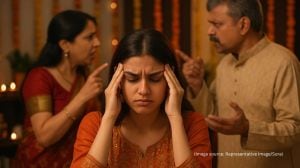The Branch Line to Antiquity
YOU want to escape to the hills, but you don’t have the stomach for hairpin bends, or the legs for an arduous trek. So, how about the s...

YOU want to escape to the hills, but you don’t have the stomach for hairpin bends, or the legs for an arduous trek. So, how about the slow train?
It’s been 100 years—and they’ve passed without an accident—since the Kalka-Simla hill line joined the great Indian railway pantheon. But getting on the train on this branch line isn’t about simply showing up.
You realise this when you reach the Kalka railway station under a shadow of stars on a sultry evening, only to be told that the deluxe train you’ve set your heart on is all booked. The summer, says area officer S C Sonkhla, has always been a rush hour for this line, right from the day the first train was flagged off on November 6, 1903. Completed in five hectic years, beginning 1898, it’s feted as one of the world’s finest examples of engineering aesthetics. Even mighty Time has been kind to the 103 sandstone tunnels with half-moon openings. The Roman multi-tier arched bridges look like works of art. The colonial turquoise-and-red stations snuggle up in the hug of the mighty Shivaliks.
‘‘We are paranoid about the upkeep,’’ Hardev Singh, the Kalka-based section engineer says gently. The journey is bliss, if you don’t mind the snail-speed: the train negotiates a rise of around 5,000 metres at 8 to 25 kmph. The curves, the loops, the gorgeous bridges, the purple jacaranda, the yellow amaltas, the cold wind, and the heady scent of pine accompany the train as it sings its way to the Queen of Hills.
The Barog station itself is a thing of beauty. ‘‘The entire structure was built by the British,’’ says assistant station master V M Gautam, pointing to the sloping roof, the beautiful skylights, elaborate wooden banisters, and geranium baskets. Today, its retiring rooms draw people from far and wide even though it’s not attached to a roadhead. ‘‘Its isolation is its biggest USP,’’ grins Gautam. So too the clear spring water that visitors love. Back on the train, the friendly driver, Om Prakash Rawat, is happy to share his seat with you. ‘‘It’s hard on the back,’’ he says, nonchalantly flinging a biggish ring at the next stop. “That’s a token,’’ he drawls,’’ a part of the system that we’ve been following for the last 100 years.’’ There are many other centenarians on this track. One Pawan Doot, the steam engine from Simla station. This stately dowager began puffing on the job in 1903 and was re-introduced in April 2002 to mark 150 years of the Indian Railways.
Eight years younger, the 14-seater railcar with its transparent acrylic roof is yet another ageless beauty. The first railcar to be introduced on the narrow-gauge in India, it was the favourite of India’s first Vice-President, Dr S Radhakrishnan. Even today it continues to make hearts skip a beat. So does the Shivalik Palace, a plush bogey that’s up for hire. Pay up the Rs 4,850 fare and you can hitch it to any train.
On this line, the surprises never end. And with its 100th birthday coming up in November, get ready for many more.






- 01
- 02
- 03
- 04
- 05

























